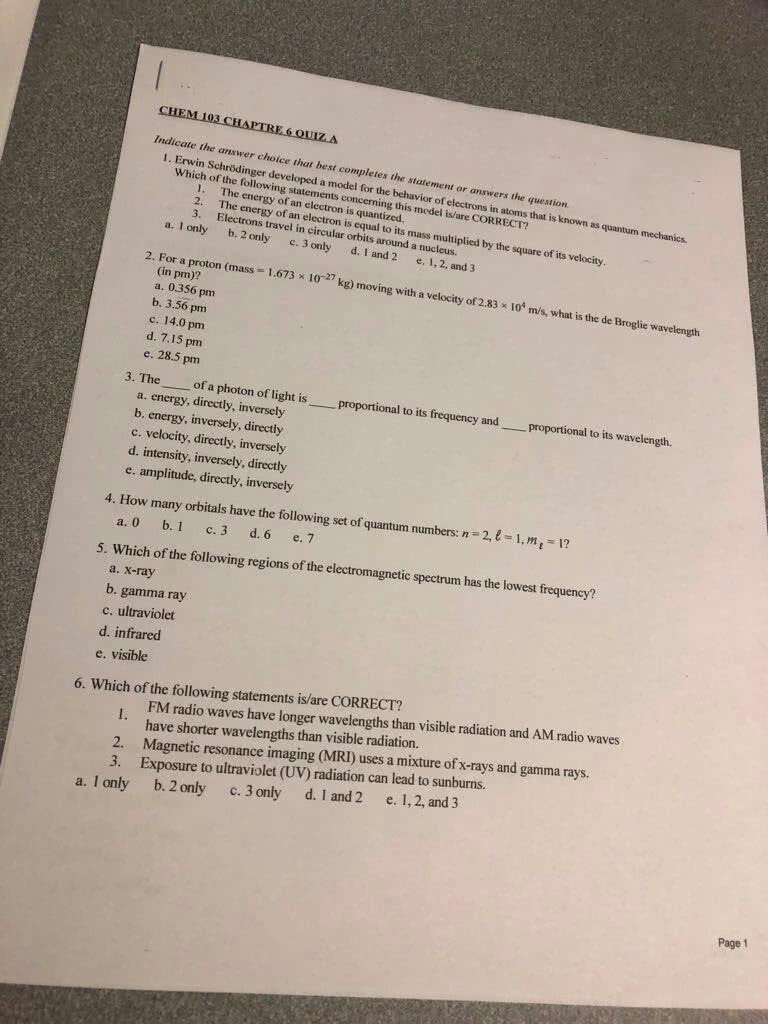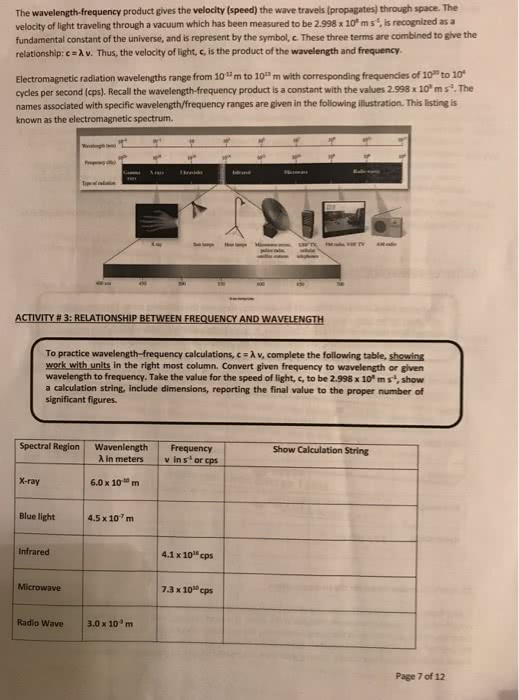CHEM B1110 Lecture Notes - Lecture 3: Bohr Model, Photon Energy, Emission Spectrum
Document Summary
Form of energy: determined by wavelength and frequency. Distance between two corresponding points on a wave. Units= meters (m) or sometimes nanometers (nm = 10^-9 m) Measure of the number of wave cycles that move through a point in space in 1 s. Units= hertz (hz) same as inverse seconds (1/s) Light has properties of both waves and particles (packets of light called photons) Energy of a photon is directly proportional to the frequency and inversely proportional to the wavelength. Most radiation sources emit light in a continuous spectrum. When heat or electricity is applied to gaseous elements a non-continuous spectrum results. Line spectrum of each element is unique (can be used to identify an element like a fingerprint) Electrons orbit the nucleus in specific circular pathways. Means electrons can have only certain energies. Electron energy increases as its distance from the nucleus increases. Orbit 1 is closest to the nucleus.



